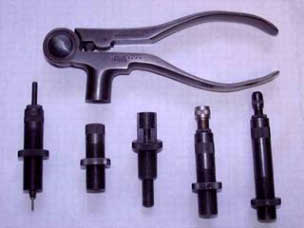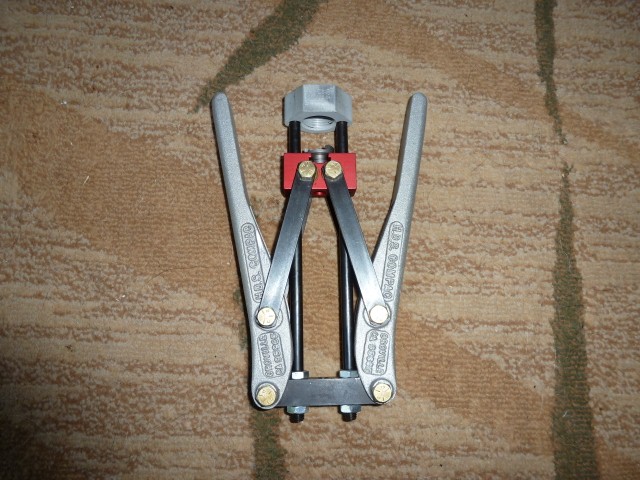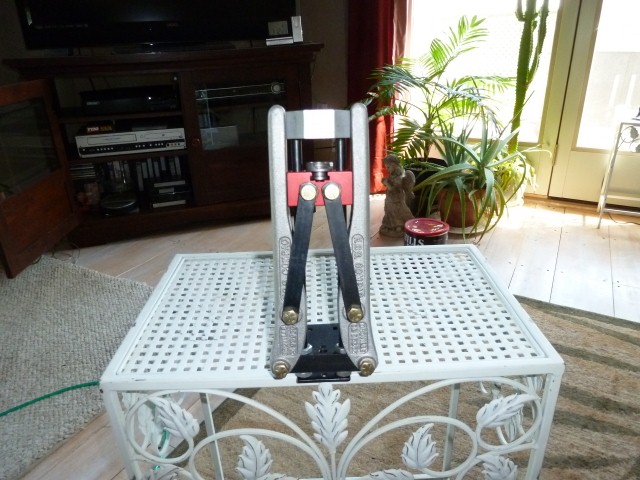Reloading: From the Beginnig
- Login to post comments
Reloading: From the Beginning
When I was still in high school one of my neighbors was an ex-serviceman named John who loved to deer hunt. His favorite weapon was a Remington 700 BDL in .243 caliber that was a real tack driver in his hands. I sometimes had occasion to visit his place to help do chores with him and his ailing father. I would help bail hay and hoe in the garden plot and in general just help out because that’s what neighbors did in those days. I usually got a real good home cooked farm meal out of it so I felt I was ahead on the deal.
As sometimes happened after a day of chores we would sit around and talk about deer hunting and rifles and anything related. John was a reloader, by which I mean he reloaded ammunition for his .243, and that intrigued me. I finally asked John to show me how he reloaded his ammo and he gladly accepted as it is always fun to have an audience, and an extra set of hands, when doing the business of ammo making.
John’s equipment was deceptively simple, a Lyman 310 tong tool and some dies with a powder dipper measured to the charge of powder for his optimum load. He always used the same bullet and powder to assemble his loads. I forget all the technical details of his load but it was what worked in his rifle after he had done quite a bit of shooting and testing. His preferred method of shooting deer was head shots! I often witnessed his skill at shooting at various distances and he rarely missed. I think the “Beware of the man with only one rifle!” adage applied to John.
The 310 tool is often called the “Nutcracker Tool” as it opens like a nut cracker and you squeeze it together to work the cases and seat bullets. The die sets usually are a de-capper die, an expander die, a priming die, a sizer die and a seater die. The operation is easy and simple once the user is familiar with how the process works. I won’t go into all the details since this isn’t about the actual tool but rather the process I went through learning to reload my own ammunition.

Lyman 310 Tong Tool-courtesy of Joe Brennan and Rick Bowman (I couldn’t get out to my bench to find mine!)
Several years later, I bought an ‘03’ Springfield 30-06 but soon thereafter entered the service. I hadn’t had much time to work with my rifle let alone reload for it or anything else. I started to rectify that after I was stationed in New London/Groton for a while and began visiting the local sport shops and reading any gun magazine I could find. I knew I wanted to reload for my rifle so I started buying my tools.
First up was a new Lyman 310 tool with a set of 30-06 dies. The picture is a tool with 30-06 die set just like mine. I did a lot of reading about reloading and decided I needed a powder scale to weigh my charges since all the gun writers said you couldn’t depend on a dipper for accurate loads! I picked an Ohaus scale that was relatively inexpensive and compact. I think today’s prices are substantially higher than what I paid for that scale in 1966 and a lot of people today like the electronic toys, not the old school stuff.
Next I added a cartridge length gauge because you need to know how long your loads are, the writers said that was important, but I hadn’t remembered John worrying too much about that. He may have known something I didn’t but I continued on my quest for tooling, adding a powder funnel and a hand held deburring/chamfering tool.
I hadn’t even reloaded a single cartridge by the time I got my first big centerfire revolver a few years later, my Python 357. Naturally a die set for the 310 tool was acquired. I finally tried my first reloads a year before I got out of the service. I bought some 4064 powder and some 168 grain Sierra bullets and started to work on my 30-06 loading. I had obtained a Lyman reloading manual by then and worked up some loads to test in my rifle. I was off to the races and never looked back.
After my stint in the service ended I added more rifles and handguns to my collection and also more reloading equipment, an RCBS press, numerous die sets and all kinds of accessories like calipers and trimmers and powder measures etc. Over the years I loaded for just about everything except my shotguns, I just didn’t see the sense in shotshell reloading when I only shot a few boxes a year for small game hunting. I later did when we joined a trap club for several years and realized what I had missed.
Recently, health issues forced me to stay out of my garage and my loading bench now sits idle for an undeterminable period of time. I longed to do something to pass the time and also bolster my ammunition supply and thought about my old 310 tool but I didn’t have any 45 Colt dies for it. Then I remembered a small Huntington Die Specialties Co. press I had purchased years before to load at a shooting bench at the range. It is a very nice little miniature scissors type press that accepts full-size dies.


It clamps to a table or bench and with some patient, reasonable technique is quite usable. It is not a heavy duty bench tool but rather a medium duty tool for on the spot reloading of a box or two of cartridges while working up a load at the range or in a pinch, reload some ammo on a hunt if needed.
It was perfect for reloading in my den and easily set up on a small TV table with a C-clamp. I set it up for my .45 Colt loads and happily loaded three or four boxes in a matter of hours for my first trial run. I felt like I had climbed Mt. Everest! I had used my down time as a ‘shut in’ to do some worthwhile loading and provided myself with enough plinking ammo for the summer and the knowledge that I could load more anytime. I think the pleasure of the reloading I’ve done over the past forty-five plus years has more than compensated me for the expense over that time.
Chris
...I spent all that money on a dillon. Great writing, Chris!
AL
I have to say that was a good read. I started reloading from scratch on my own because during the first Gulf War I bought five boxes of 44 mag ammo that was crap. I bought a entry level RCBS kit and never looked back. I now only trust completely my own ammo for accuracy and reliability. I still occasionally purchase factory ammo but mostly 22 LR and shotgun ammo. Keep up the interesting write ups.



Recent comments
2 years 12 weeks ago
3 years 38 weeks ago
3 years 43 weeks ago
4 years 29 weeks ago
5 years 18 weeks ago
5 years 20 weeks ago
5 years 20 weeks ago
5 years 21 weeks ago
5 years 21 weeks ago
5 years 21 weeks ago